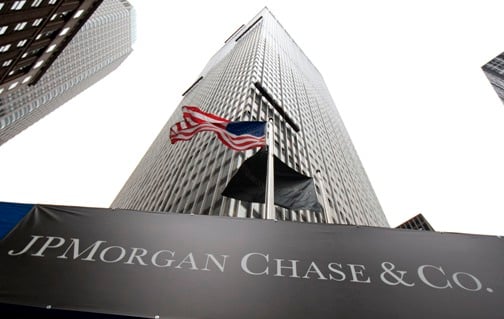Value-at-risk measurement proved to be way off for both companies
Put this one in the category of the famous quote often credited to Mark Twain: "History does not repeat itself, but it does rhyme."
Last week when JPMorgan Chase & Co. warned investors about a $2 billion trading loss at its chief investment office, it also disclosed it had been using a faulty model to determine the unit's so-called value at risk. For me at least, the story conjured up memories of a similar tale at Enron Corp. more than a decade ago, the details of which I'll get to in a moment.
Initially, in its first-quarter earnings press release on April 13, JPMorgan said the average value-at-risk figure for its chief investment office was $67 million during the three months ended March 31. JPMorgan revised that to $129 million when it filed its quarterly report with regulators last week.
The figure is an estimate of the maximum "potential loss from adverse market moves in an ordinary market environment" for a single trading day "using a 95 percent confidence level," as the company describes it. JPMorgan Chief Executive Officer Jamie Dimon explained that the company had implemented a new value-at-risk model last quarter that it later realized was "inadequate." It then switched back to an older version that it had been using for several years, which showed the bigger number.
Value-at-risk measurements, which JPMorgan pioneered during the 1990s, have many shortcomings -- and critics. For example, if an airline told you it was 95 percent confident your plane wouldn't crash, you wouldn't want to get on board. (You can read more about the metric's history in this lengthy story by Joe Nocera in the New York Times magazine.)
All this reminded me of a disclosure in Enron Corp.'s 2000 annual report, when the Houston-based energy trader was still a stock-market darling. Back then, Enron reported a $59 million value-at-risk figure for its equity investments, which proved to be just a wee bit unreliable. Enron filed for bankruptcy in late 2001. Note the reference to JPMorgan and its VAR trademark toward the end of the disclosure:
Enron has performed an entity-wide value at risk analysis of virtually all of Enron's financial instruments, including price risk management activities and merchant investments. Value at risk incorporates numerous variables that could impact the fair value of Enron's investments, including commodity prices, interest rates, foreign exchange rates, equity prices and associated volatilities, as well as correlation within and across these variables. Enron estimates value at risk for commodity, interest rate and foreign exchange exposures using a model based on Monte Carlo simulation of delta/gamma positions which captures a significant portion of the exposure related to option positions. The value at risk for equity exposure discussed above is based on J.P. Morgan's RiskMetrics(TM) approach. Both value at risk methods utilize a one-day holding period and a 95% confidence level. Cross-commodity correlations are used as appropriate.
All these years later, the art of expressing risk as a single, easy-to-use number is still a work in progress.
--Bloomberg News--
(Jonathan Weil is a Bloomberg View columnist. Follow him on Twitter.)







